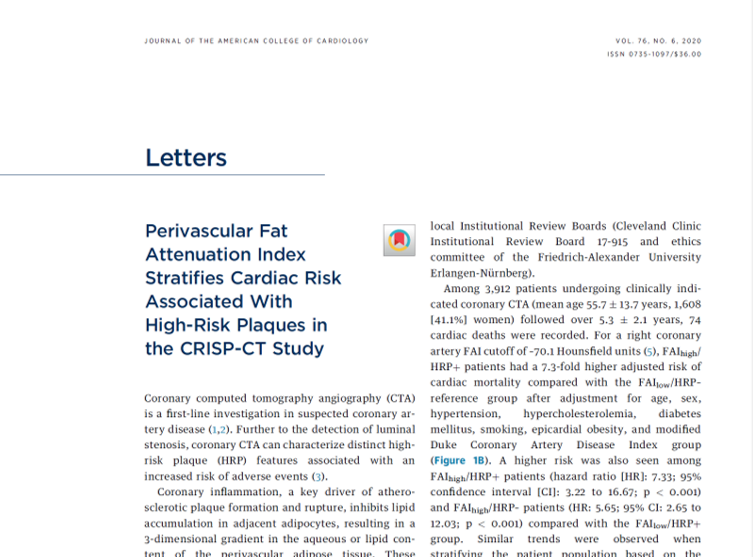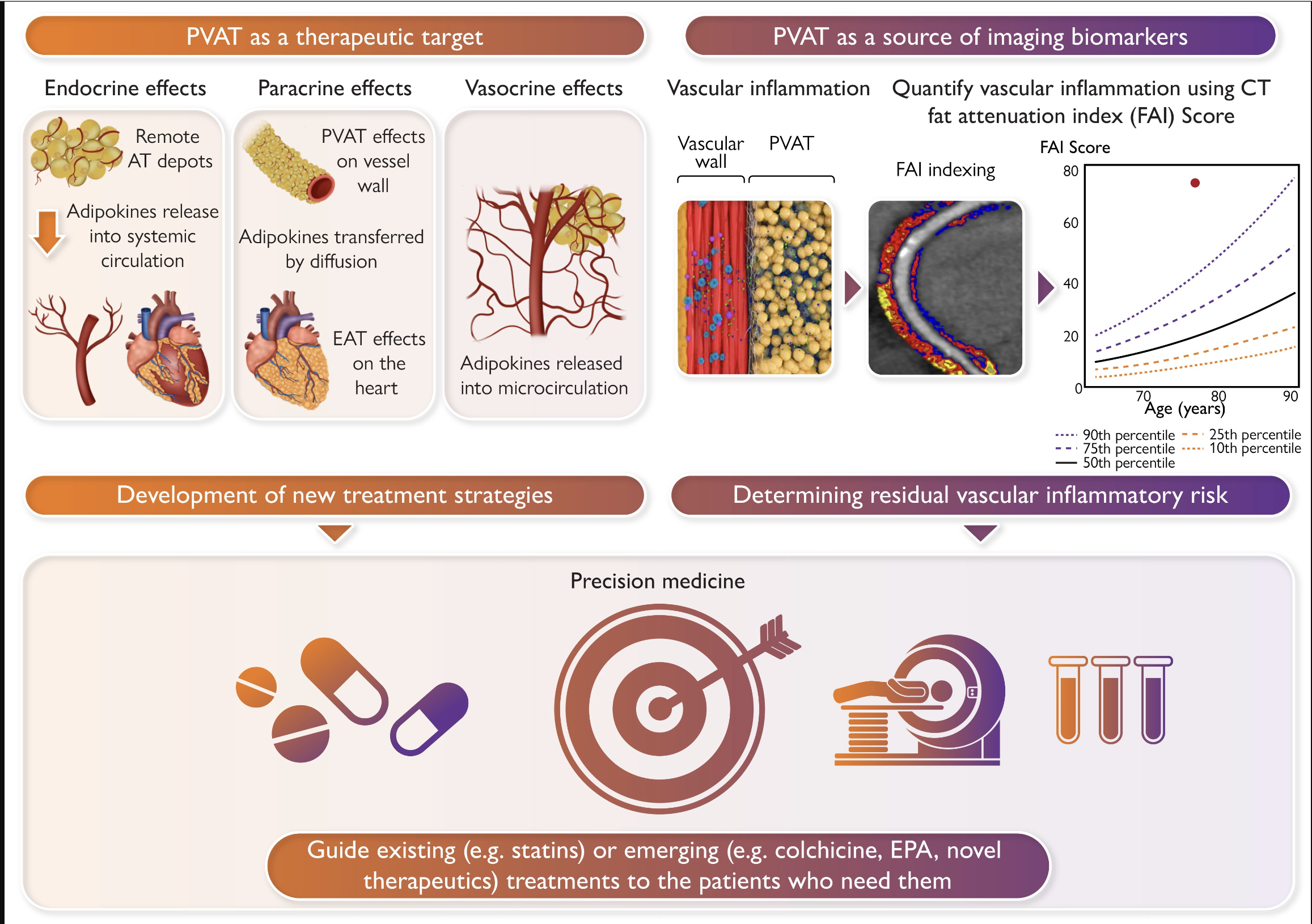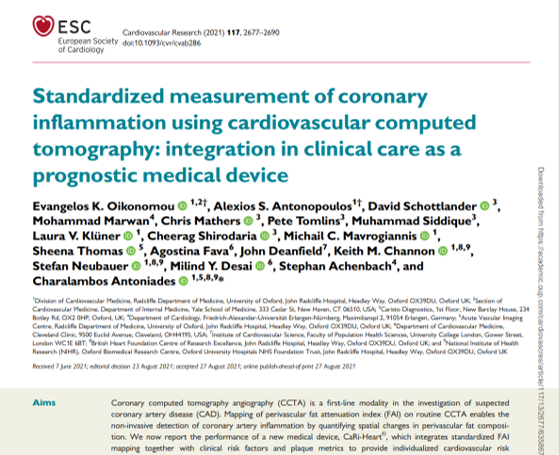Perivascular Fat Attenuation Index Stratifies Cardiac Risk Associated With High-Risk Plaques in the CRISP-CT Study | Oikonomou et al.

Coronary computed tomography angiography (CTA) is a first-line investigation in suspected coronary artery disease. Further to the detection of luminal stenosis, coronary CTA can characterize distinct high-risk plaque (HRP) features associated with an increased risk of adverse events.
Coronary inflammation, a key driver of atherosclerotic plaque formation and rupture, inhibits lipid accumulation in adjacent adipocytes, resulting in a 3-dimensional gradient in the aqueous or lipid content of the perivascular adipose tissue. These inflammation-induced changes can be quantified as perivascular attenuation gradients using the coronary CTA–derived Fat Attenuation Index (FAI). Perivascular FAI has incremental prognostic value beyond traditional risk factors, as shown in the CRISP-CT (Cardiovascular Risk Prediction using Computed Tomography) study. However, it is unclear whether the FAI provides incremental value to HRP.
Read the full article on Science Direct


